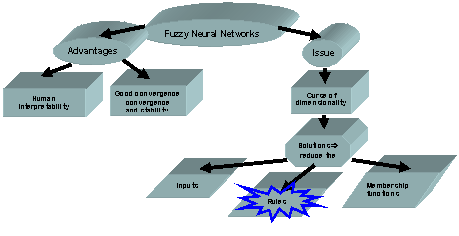Computational Intelligence in Environmental Applications
Researchers : Dr Barbara Pizzileo and Dr. Kang Li
Introduction
In the past decade, atmospheric pollution and land contamination have become two major global concerns due to ever increasing demand on energy and raw material consumptions in both developed and developing countries. Computational intelligence has shown great potential in modelling and control (or remediation) of the main contributors to these two global problems.
The major contributors to atmospheric pollution are mainly from fossil-fuel power stations and transportation vehicles. Ever increasing demand on energy has made the problem even more challenging. The principal pollutants from these energy systems may include sulphur dioxide (SO2), nitrogen oxides (NOx), carbon dioxide (CO2) and particulates (soot, flyash). Among these emissions, no practical methods exist for reducing CO2 or NOx significantly, leading to increased research into these two important areas.
For land contamination, there is increasing pressure to reuse brownfield sites rather than develop greenfield sites. The changes in environmental legislations are putting demand on land contamination investigation, sampling and remediation. Cost effective and real-time contaminated land management and remediation has become more important. The big challenge in contaminated land management is, given limited budget, how to improve the quality of sampling data, which is affected by the quality of sample analysis as well as the sampling material. The application of Geostatistics and geostatistical concepts in sampling is relatively new.
This project focuses on the application of computational intelligence in modelling and prediction of atmospheric pollutant emissions in urban air as well as contamination distribution and remediation using Fuzzy neural nets and Guassian Radial Basis Function (RBF) neural nets.
Methods and results
1. Construction of fuzzy neural networks and radial basis neural networks
Fuzzy neural networks (FNNs) represent a large class of neural networks that combine the advantages of associative memory networks (e.g. B-splines, radial basis functions and support vector machines) with improved transparency, a critical issue for nonlinear dynamic modelling applications. For associative neural networks, the advantage is that the linear parameters can be trained online with good convergence and stability properties. However, they produce essentially black box models with poor interpretability. For fuzzy neural networks, the basis functions are associated with linguistic rules, and every numerical result can admit a linguistic interpretation. Therefore “expert’s experience” can be incorporated into the FNN construction to improve the performance. In particular, for environmental issues discussed here, the number of data samples is not big enough, due to the cost of site investigations. Theoretic research on FNN in this project has focused on the new algorithm development to select a smaller number of rules out of the total initial big pool (Figure 1).

Fig 1. Fuzzy neural networks
The theoretical work in this area include
- Fast recursive algorithms to select both the model terms and the parameters.
- Fast algorithms to select rule and network inputs.
Guassian Radial basis
function neural networks represent another category of neural networks that has
been widely used due to its locality of the basis functions. Theoretic research
in this group is to propose advanced training and construction algorithms. In
particular, an integrated analytic framework is proposed to select both the
hidden nodes and to tune the centres and widths of hidden nodes simultaneously.
The proposed algorithms for both fuzzy and radial basis function neural networks have been applied to several application case studies, including air and land contamination. Figure 2 shows the real PAH contamination contour in a waste site and (a total of 38 samples) as well as the predicted contamination contour using RBF neural networks (only using phase one 15 data samples for modelling). It is clear that the RBFNN can clearly identity the trend of contamination in this site.


Acknowledgements
This work has been partially supported by the Engineering and Physical Sciences Research Council (EPSRC) for funding this project (GR/S85191/01), European Social Fund, and the Questor Center at Queen’s.
Publications
- B. Pizzileo, K. Li, and G. W. Irwin, “A fast method for fuzzy neural network modelling and refinement”, submitted to International Conference on Modelling, Identification and Control, June 29 - July 2, 2008, Shanghai, China.
- B. Pizzileo, K. Li, “A new fast algorithm for fuzzy rule selection”, IEEE International Conference on Fuzzy Systems, Imperial College, London, UK, 23-26 July, 2007.
- B. Pizzileo, K. Li, and G. W. Irwin. “A Fast Fuzzy Neural Modelling Method for Nonlinear Dynamic Systems”. 2007 International Symposium on Neural Networks, June 3-7, 2007, Nanjing, China.
- K. Li, B. Pizzileo, A. Ogle, and C. Scott, “Staged Neural Modeling with Application to Prediction of NOx Pollutant Concentrations in Urban Air”, Lecture Notes in Computer Science, Springer-Verlag GmbH. LNCS 4113, 2006, 1282-1293.
- K. Li, A. Ogle, B. Pizzileo. “Advanced regression method for prediction of NOx pollutant concentrations in urban air”. European Geosciences Union General Assembly 2006, Vienna, Austria, 02 – 07 April 2006.
- J. Peng, K. Li, G. W. Irwin. “A new Jacobian matrix for optimal learning of single-layer neural nets”. IEEE Transactions on Neural Networks, Vol. 19, No.1, 119-129, 2008.
- J. Peng, K. Li, D.S. Huang. “A Hybrid forward Algorithm for RBF neural Network construction”. IEEE Transactions on Neural Networks, Vol 17, No. 6, pp 1439-1451, 2006.
